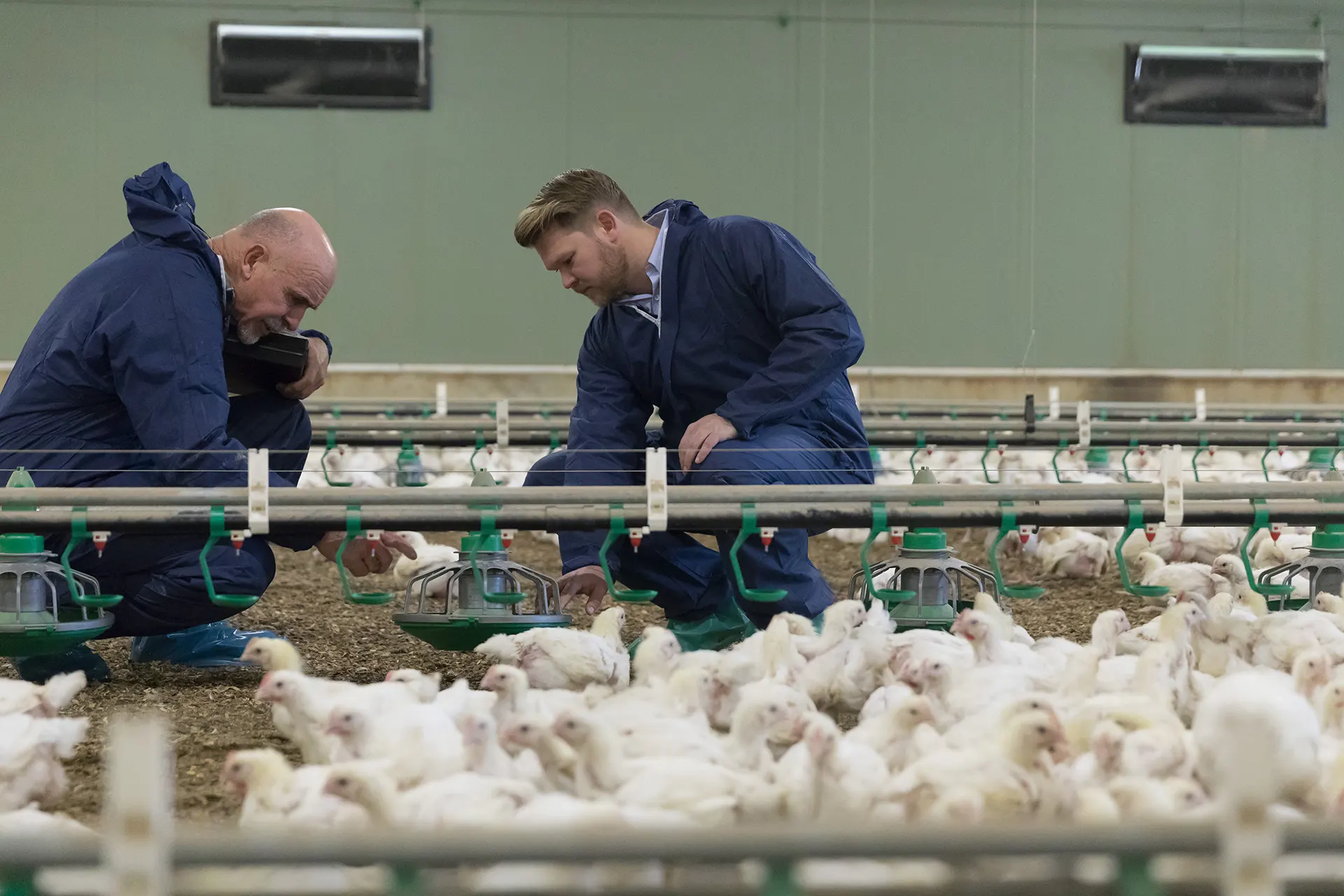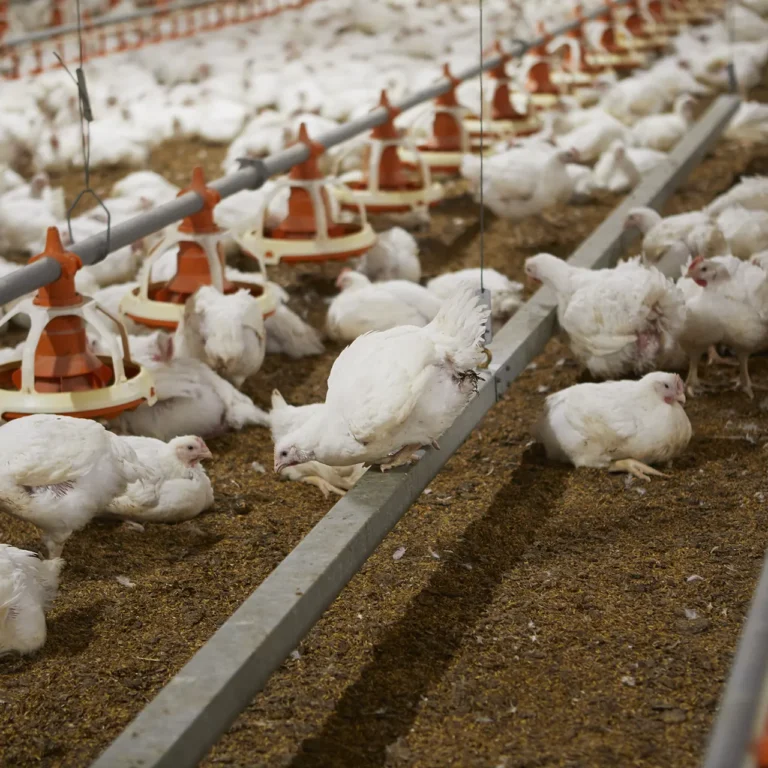
Standards
The RSPCA standards exist solely to improve farm animal welfare. They are detailed and focus on providing good housing conditions for animals (whether indoor, outdoor or in a combination of both). Crucially, they also provide opportunities for animals to express behaviours that come naturally to them. All RSPCA Approved Standards are publicly available below.
There’s an average of 343 unique requirements within each standard that need to be met for a Producer to achieve RSPCA Approved certification.
Meat Chickens

Meat chickens
Meat chickens reared by Producers with RSPCA Approved certification are encouraged to be active. The standard allows for enriched indoor and outdoor housing that meet the needs of the birds. The RSPCA Approved Farming Scheme Standard is just one of the ways we work to improve meat chicken welfare, see here what the RSPCA advocates for.
Note: Exemptions to specific standards on particular sites may be granted on rare occasions, but only where the RSPCA can see that animal welfare is not compromised.
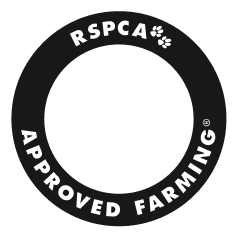
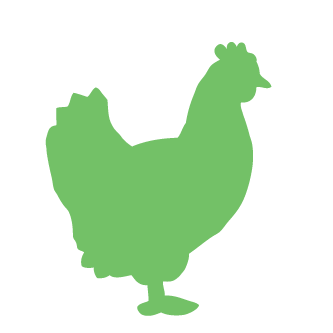
Pigs
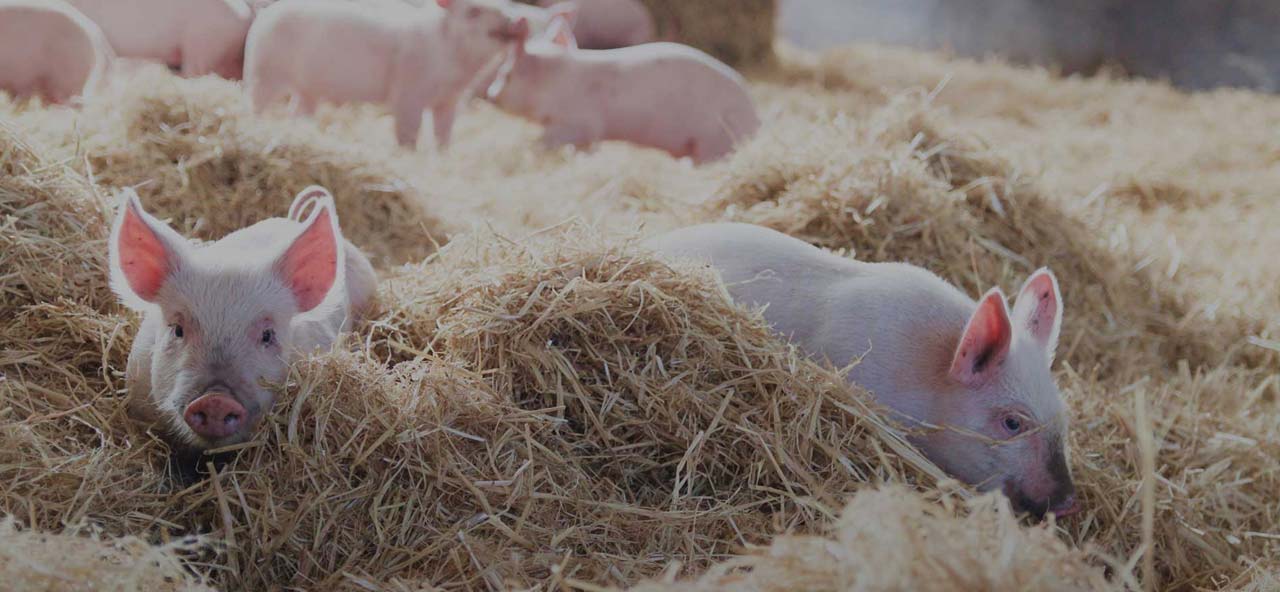
Pigs
Pigs reared by Producers meeting the RSPCA Approved Standard for Pigs have space to move, forage, socialise and explore. The standard allows for enriched indoor and outdoor housing that meets the needs of the pigs.
Note: Exemptions to specific standards on particular sites may be granted on rare occasions, but only where the RSPCA can see that animal welfare is not compromised.


Layer hens
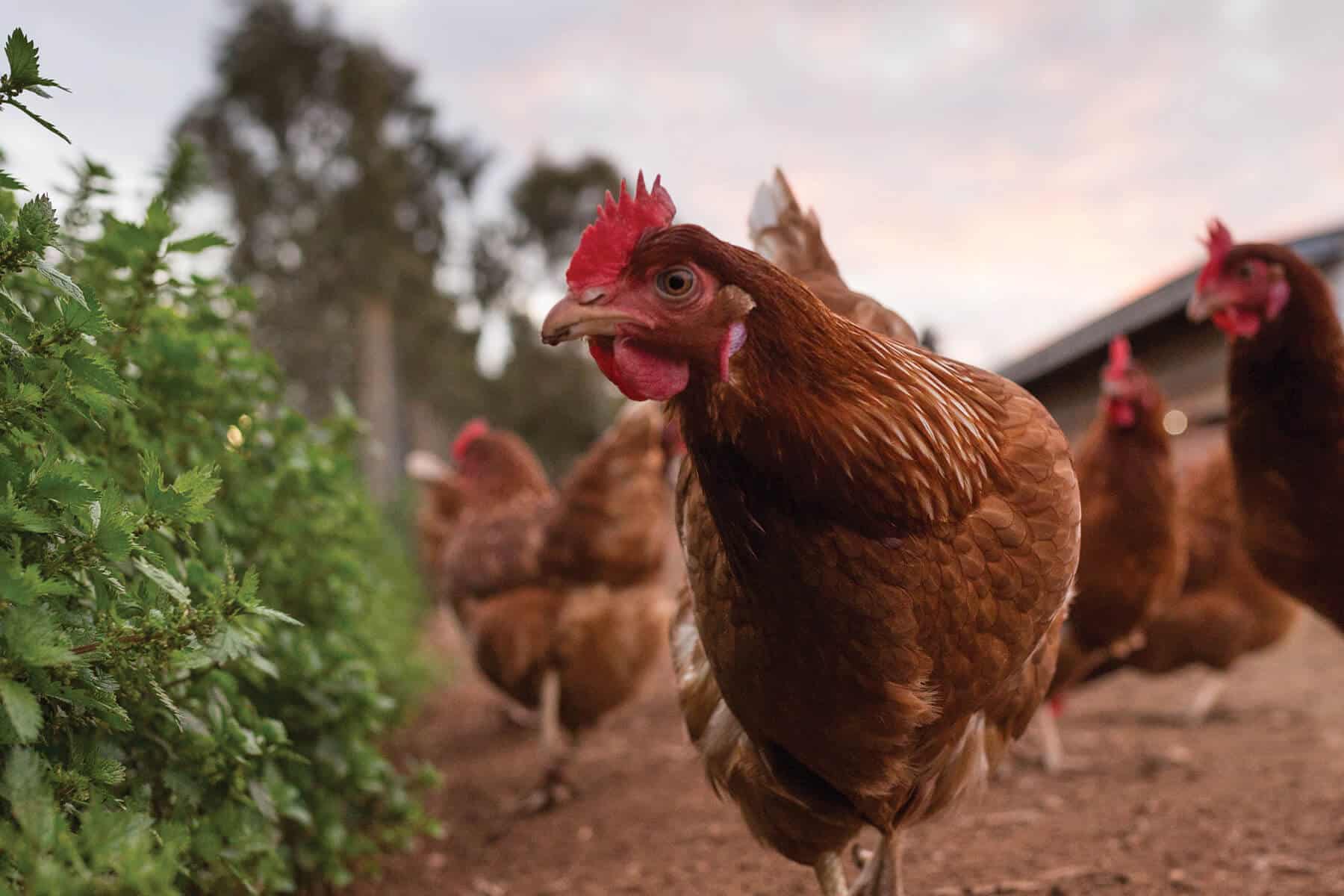
Layer hens
Hens raised by Producers with RSPCA Approved certification have nests, perches, litter to dust bathe and enough space to move. The standard allows for enriched indoor and outdoor housing that meet the needs of the birds.
Note: Exemptions to specific standards on particular sites may be granted on rare occasions, but only where the RSPCA can see that animal welfare is not compromised.


Turkeys
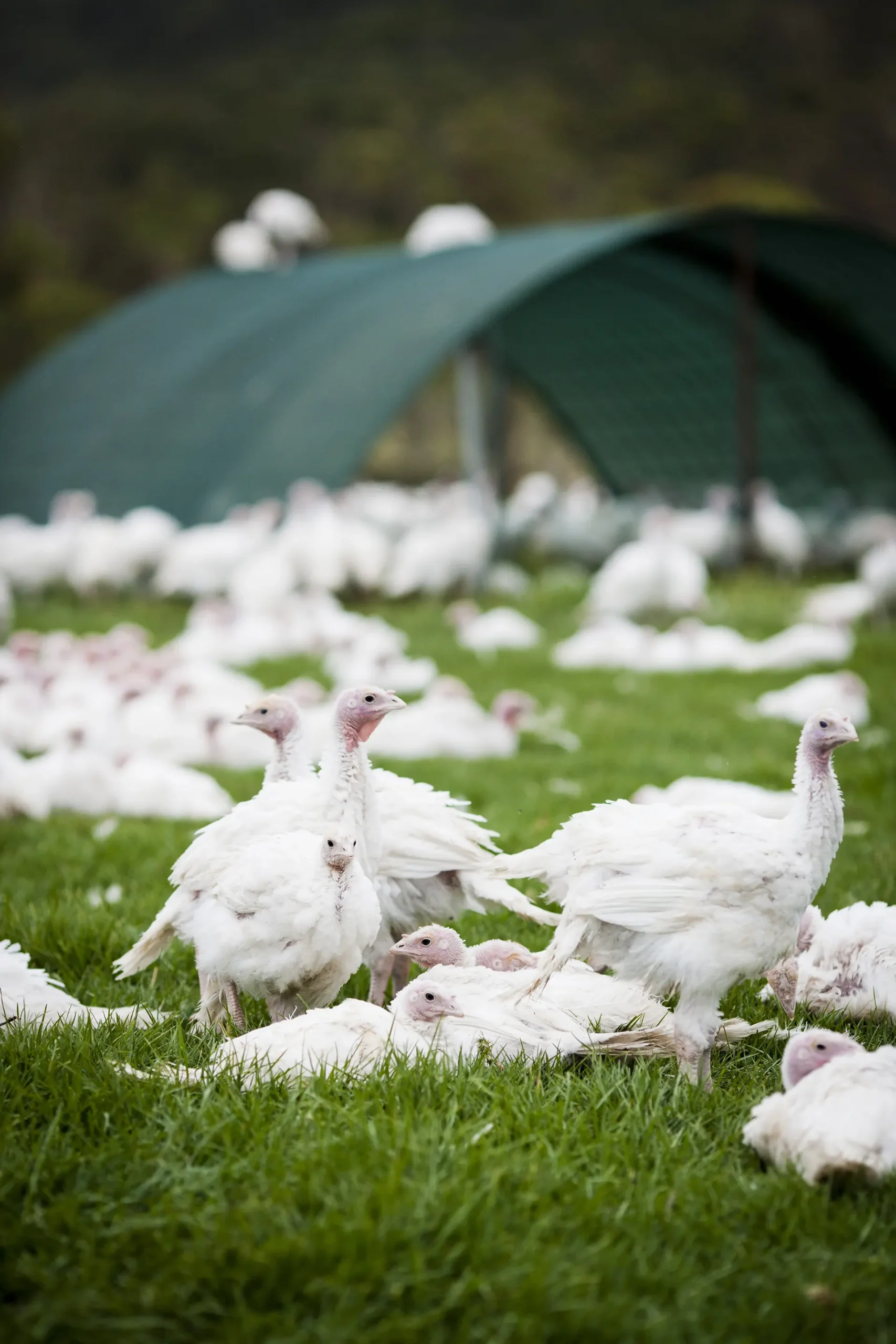
Turkeys
Turkeys reared by Producers with RSPCA Approved certification are encouraged to be active. The standard allows for enriched indoor and outdoor housing that meets the needs of the birds.
Note: Exemptions to specific standards on particular sites may be granted on rare occasions, but only where the RSPCA can see that animal welfare is not compromised.


Salmon
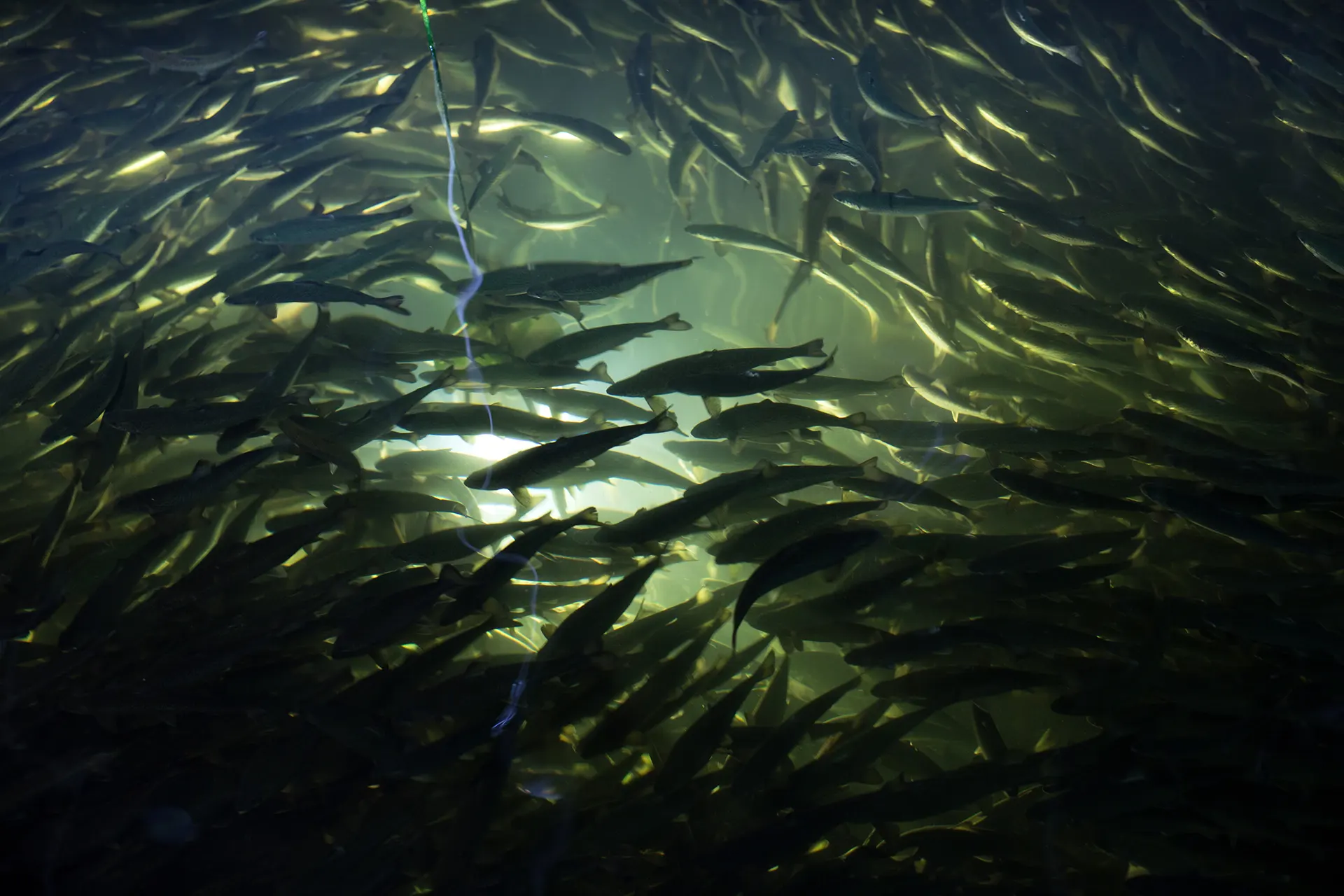
Farmed Atlantic salmon
Salmon reared by Producers with RSPCA Approved certification have a well-managed environment with clean, oxygen-rich water with plenty of space for swimming, protection from predators and handling in a low-stress manner. The RSPCA Approved Farming Scheme Standard is just one of the ways we work to improve salmon welfare, see here what the RSPCA advocates for.
Note: Exemptions to specific standards on particular sites may be granted on rare occasions, but only where the RSPCA can see that animal welfare is not compromised.


Dairy Calves

Dairy calves
The RSPCA Approved Standard for non-replacement dairy calves focus on ensuring good farming practices, handling, husbandry and management.
Note: Exemptions to specific standards on particular sites may be granted on rare occasions, but only where the RSPCA can see that animal welfare is not compromised.


Traceability
The Chain of Custody Standard ensures the integrity of the certification throughout the supply chain. Businesses that handle or supply RSPCA Approved product must adhere to the requirements of this standard.

What RSPCA Approved means for
Meat Chickens
| What’s required to be RSPCA Approved (barn raised and free range) | Why it’s important | What’s required by law |
|---|---|---|
| Lower stocking density when inside the shed 28-34kg/m2 depending on shed ventilation type. When birds are fully grown this means: Max. 10 birds/m2 in naturally ventilated sheds Max 12 birds/m2 in mechanically and tunnel ventilated sheds | Having space to move freely, walk around and flap their wings, helps chickens build stronger bones and muscles, and means they can move away from birds they don’t get along with. | 28-40kg/m2 depending on shed ventilation type and the season. When birds are fully grown this means: Max. 10 birds/m2 in naturally ventilated sheds Max 14 birds/m2 in mechanically and tunnel ventilated sheds |
| Access to perches 2.7m of perching per 1,000 birds from 7 days of age. | Encourages birds to be active and helps build stronger bones and muscles. | Providing perches is not legally required |
| Quality bedding covering the entire shed floor Dry, friable litter managed and maintained at a depth of 50mm. | Allows birds to express natural dustbathing and foraging behaviours and reduces the risk of burns and blisters. | Floor substrate may consist of litter, but not required. |
| Interesting objects to peck at Provided from 7 days of age and distributed throughout the shed so that all the birds can access them. | Allows birds to express natural pecking and foraging behaviours. | Providing pecking objects is not legally required. |
| Lighting that resembles day and night Continuous minimum light period of 8 hours, at 20 lux average intensity. Continuous minimum dark period of 4 hours. With a minimum of 6 hours total darkness. | Chickens need a certain amount of light to encourage normal behaviours and maintain good eye health. In the absence of natural light, artificial light needs to be provided at an appropriate intensity and duration. Periods of complete darkness allow birds to rest properly. | No minimum light or dark period, and no minimum light intensity (lux). |
| Good air quality Airflow, temperature, humidity and dust must be managed to avoid negative impacts on birds. Ammonia readings must be taken at a minimum of twice a week and must not exceed 15ppm. | Reduces the risk of respiratory issues and eye irritation. | Adequate ventilation is required to help control airflow, temperature and humidity. When ammonia levels exceed 20ppm action must be taken to lower it. |
| Regular welfare checks on birds Birds must be checked at least 3 times every 24 hours to make sure their appearance, vocalisations and behaviours are normal, and checked more often during periods of environmental extremes, e.g. hot weather. | Regular monitoring of birds means that any issues that might impact negatively on the welfare of birds is noticed and rectified quickly. | Birds must be checked at least once a day. |
| No growth hormones used | The Australian meat chicken industry has not used growth hormones for decades. | |
| Antibiotics used responsibly Antimicrobial stewardship plan required. Therapeutic use of antibiotics permitted under veterinary advice. Prophylactic (e.g. coccidiostats) use of antibiotics permitted | Therapeutic use of antibiotics is when they are used to treat an animal that is already sick. Using antibiotics when birds are sick is an important aspect of good animal welfare to make sure that animals are healthy. | Therapeutic use of antibiotics permitted. Prophylactic (e.g., coccidiostats) use of antibiotics permitted. |
| Independent auditing of farms Specially-trained RSPCA Assessors visit farms 2-4 times a year. | Frequent and thorough assessments, conducted by specially-trained RSPCA Assessors, mean farms and sites within the supply chain are independently certified as meeting the RSPCA Standard. | Not legally required |
| Calm and quiet handling Birds must be approached and handled calmly and quietly, in a way that avoids injuries. There are specific requirements during catching birds to load for transport, that only 4 birds per hand are allowed to be picked up or carried. | Good stockpersonship and handling that done in a way that’s gentle, reduces the risk of stress or injury. | Management, infrastructure and equipment shouldn’t cause unnecessary distress to birds. There are no specific day-to-day handling requirements, however when catching birds to load, there is a maximum of 5-6 birds per hand, depending on their weight. |
| Independent auditing of abattoirs Only abattoirs that have been routinely assessed by RSPCA Assessors may be used. | To make sure that abattoirs are complying with the requirements outlined in the RSPCA Standard. | Not legally required |
| CCTV in abattoirs CCTV must be installed and record at all points where there are live birds. | Requiring monitoring and oversight both in-person real-time visual motoring as well as through assessment of remote monitoring equipment, such as CCTV, is important for providing assurance and demonstrating compliance with animal welfare requirements. | Not legally required |
| Stunning before slaughter All birds must be stunned prior to slaughter. There are no exceptions. Controlled atmosphere stunning (using carbon dioxide gas) and electrical water bath systems are permitted. However there are specific requirements for each, including limiting the length of time conscious birds may be suspended prior to being stunned, making sure birds are completely stunned prior to slaughter, and back-up procedures so that no birds are missed. | Slaughter without prior stunning results in birds experiencing fear and stress prior to death. | Birds must be stunned prior to slaughter, unless the abattoir has received an exemption (e.g. for religious slaughter purposes). |
| Additional requirements free range | Why it’s important | What’s required by law |
|---|---|---|
| Outdoor access all day All birds must be able to access the range during the day for a minimum of 8 hours. | Allows birds time to go outside and explore. | All birds must be able to access the range during the day for a minimum of 8 hours. |
| Easy access to the outdoors 30% of the length of the shed on each side must open, or 50% on one side. There are also minimum requirements for the design, number and positioning of openings. | Makes it easier for birds to navigate and find an opening to get outside, which means they are more likely to go outside. | Min 35cm high and 40cm wide with 2m per 1,000 birds |
| Outdoors is appealing for birds The outdoor area must be designed and managed so that birds are encouraged to go outside, including providing palatable vegetation and 12m2 of overhead shade per 1,000 birds. | Birds are more likely to go outside and explore when they feel safe from predators, they have shelter from the weather and there’s interesting places to scratch and forage for bugs. | Access to shaded areas, no legal definition on coverage |
Note: The information provided in this table is intended to give a general overview, based on the Model Code of Practice for the Welfare of Animals: Domestic Poultry 4th edition and RSPCA Approved Farming Scheme Standard for Meat Chickens. Specific housing and management practices will vary between farms and what may be required under various certification schemes.
Pigs
| What’s required to be RSPCA Approved | Why it’s important | What’s required by law |
|---|---|---|
| No crates or stalls Sow stalls, farrowing crates and boar stalls are not allowed on farms with RSPCA Approved certification. Whether inside all of part of the time there are minimum requirements for the lying space for pigs, gilts, sows and boars. | Extreme close confinement of pigs can lead to stress, injury and abnormal behaviours. By giving pigs freedom to move around, interact with other pigs and their environment, they are able to behave more normally. | Gilts and sows can legally be confined to stalls and/or farrowing crates for up to 6 weeks each gestation period, which includes mating, pregnancy, farrowing (giving birthing) and lactation. Boars can legally be confined to boar stalls. In these crates or stalls pigs can stand up and lie down but cannot turn around. |
| Bedding in all sheds, shelters and pens Good quality bedding provided and maintained with a depth up to 200mm. Nesting material provided to gilts and sows prior to farrowing (giving birth). | Provides comfort to pigs when lying down and encourages pigs to forage. Nesting material is important to enable nest-building behaviour. | Bedding is not legally required unless pigs are housed in deep litter housing systems. Otherwise pigs can spend their lives on bare concrete or slatted flooring. No legal requirement to provide nesting material for gilts or sows. |
| Enrichment for foraging If pigs do not have continuous access to the outdoors they must have enrichment that allows them to express rooting, foraging and chewing behaviours. | Pigs are naturally active and inquisitive animals, who are motivated to chew, forage and explore their environment. When indoors, materials need to be provided to allow these behaviours. | Enrichment not legally required. |
| No tail docking, teeth clipping or surgical castration Surgical castration, nose ringing, tail docking, ear notching and teeth clipping are not permitted on farms with RSPCA Approved certification. Immunocastration is permitted. | Where painful husbandry procedures occur and especially when performed without pain relief they can cause fear, pain and distress. | Painful husbandry procedures are allowed and pain relief is not legally required. |
| Regular welfare checks on pigs Pigs must be checked at least once every 24 hours to make sure their appearance, vocalisations and behaviours are normal, and checked more often during periods of environmental extremes, e.g. hot weather and during farrowing and lactation. | Regular monitoring of pigs means that any issues that might impact negatively on the welfare of pigs is noticed and rectified quickly. | Pigs must be checked at least once a day. |
| Independent auditing Specially-trained RSPCA Assessors visit farms 2 times a year. | Frequent and thorough assessments, conducted by specially trained RSPCA Assessors, mean farms and sites within the supply chain are independently certified as meeting the RSPCA Standard. | Not legally required. |
| Calm handling on farm, during transport and at the abattoir Specific requirements for the handling of pigs to make sure they are handled calmly and quietly. | Good stockpersonship and handling is done in a way that’s gentle, reduces the risk of stress or injury. | Dogs, electric prodders and hitting with solid objects are not allowed to be used when handling pigs. Otherwise, no specific legal requirements to make sure pigs are handled calmly and quietly. |
| Abattoir auditing Only abattoirs that have been routinely assessed by RSPCA Assessors may be used. | To make sure that abattoirs are complying with the requirements outlined in the RSPCA Standard. | Not legally required. |
| CCTV in abattoirs CCTV must be installed and record at all points where there are live pigs. | Requiring monitoring and oversight both in-person real-time visual motoring as well as through assessment of remote monitoring equipment, such as CCTV, is important for providing assurance and demonstrating compliance with animal welfare requirements. | Not legally required. |
| Stunning before slaughter All pigs must be stunned prior to slaughter. There are no exceptions. Electrical and CO2 stunning are permitted. However there are specific requirements for each, including group-stunning systems for where CO2 stunning is used. This offers some benefits to electrical stunning due to the ability to stun animals in groups, with minimal restraint and less handling, and therefore potentially less stress before stunning. | Slaughter without prior stunning results in pigs experiencing fear and stress prior to death. | Pigs must be stunned prior to slaughter. |
| Additional requirements for outdoor bred and free range | Why it’s important | What’s required by law |
|---|---|---|
| Wallowing Where breeding pigs are outside they must have access to wallows. These are shallow depressions containing muddy water which pigs will dig and root in before covering themselves with mud. | Wallowing is a behaviour that is very social for pigs as they often do it in groups. Pigs also use wallows for temperature control out in the sun, and to protect themselves from flies and the sun. | Not legally required. |
| Sows (mother pigs) naturally make a nest with when they are ready to give birth. On outdoor bred and free-range farms with RSPCA Approved certification, sows have access to a farrowing hut and bedding so they can build their nest ready for when their piglets arrive. | Sows have a strong motivation to nest build prior to giving birth, and if they are unable to carry out this behaviour, abnormal behaviours can occur. | Minimum of 4-6m2 of shelter and shade for each lactating sow with piglets is required, however, no specific legal requirements for farrowing. |
Note: The information provided in this table is intended to give a general overview, based on the Model Code of Practice for the Welfare of Animals: Pigs and RSPCA Approved Farming Scheme Standard for Pigs. Specific housing and management practices will vary between farms and what may be required under various certification schemes.
Layer Hens
| What’s required to be RSPCA Approved (barn laid and free range) | Why it’s important | What’s required by law |
|---|---|---|
| Lower stocking density when inside the shed Max 7 birds per m2 for floor-based sheds or 9 birds per m2 where there is outdoor access. Max 9 birds per m2 for multi-level sheds. Cages (of any sort) are not allowed. | Having space to move freely, walk around and flap their wings helps hens build stronger bones and muscles, and means they can move away from birds they don’t get along with. | Currently 18 birds per m2 in cages, however proposed legislation requires 10 birds per m2 in cages, with a phase out of battery cages by 2036. Max 15 birds per m2 in the shed for either barn or free-range systems. |
| Access to perches, ramps and environmental enrichment Birds must have access to a minimum of 150m of perches per 1000 birds, at a variety of heights. Birds in multi-level sheds must have access to non-slip ramps that allow them to walk up and down with ease. Birds must have access to at least two different types of environmental enrichment. | Encourages birds to be active and helps build stronger bones and muscles. Allows hens to roost which they are naturally motivated to do at night. | Currently perches not legally required, however proposed legislation requires 15cm perching space per bird. |
| Nest boxes One single nest box for every 7 birds or 1m2 nest boxes for every 120 birds. Nest boxes must be enclosed with substrate that encourages nesting behaviours. | Hens need a safe and secluded place to lay their eggs and not be disturbed by other birds. | In battery cages, no nest boxes are provided. In barn or free-range systems one single nest box for every 7 birds or 1m2 next boxes for every 120 birds. |
| Litter Dry, friable litter managed and maintained and accessible from placement unless there is access to outdoor area. Litter must cover at least 1/3 of floor in floor-based shed and be deep enough for birds to dust bathe and forage. | Allows birds to express natural dust bathing and foraging behaviours. | In conventional cages hens stand on wire and have no access to litter. In barn or free-range system floor substrate may consist of litter, but not required. |
| Regular welfare checks on birds Birds must be checked at least three times every 24 hours to make sure their appearance, vocalisations and behaviours are normal, and checked more often during periods of environmental extremes, e.g., hot weather. | Regular monitoring of birds means that any issues that might impact negatively on the welfare of birds is noticed and rectified quickly. | Birds must be checked at least once a day. |
| Independent auditing of farms Specially trained RSPCA Assessors visit farms 2-4 times a year. | Frequent and thorough assessments, conducted by specially trained RSPCA Assessors, mean farms and sites within the supply chain are independently certified as meeting the RSPCA Standard. | Not legally required. |
| Additional requirements free range | Why it’s important | What’s required by law |
|---|---|---|
| Outdoor stocking density 2,500 birds per hectare maximum. | The quality and space allowance of the outdoor range are equally important for encouraging birds to range outside. The positive welfare impacts provided by outdoor access for birds may be limited on poor quality outdoor ranges even when adequate space is provided. | Up to 10,000 birds per hectare as per labelling legislative requirements. |
| Outdoors is appealing for birds The outdoor area must be designed and managed so that birds are encouraged to go outside, including providing palatable vegetation and a minimum of 25m2 of overhead shade per 1,000 birds. | Birds are more likely to go outside and explore when they feel safe from predators, they have shelter from the weather and there’s interesting places to scratch and forage. | Shade and shelter are required but no minimum requirements for the amount required on the range. |
| Easy access to the outdoors Minimum requirements for the design, number and positioning of openings to allow birds a clear view of the outdoor area and to pass through with normal posture and without obstruction. | Makes it easier for birds to navigate and find an opening to get outside, which means they are more likely to go outside. | Minimum 35cm high and 40cm wide with 2m per 1000 birds. |
| Outdoor access all day All birds must have the choice to access an outdoor area for 8 hours a day as soon as nest box training is completed. | Allows birds time to go outside and explore. | When fully feathered birds should have access to outdoor range during daylight hours for a minimum of 8 hours per day. |
Note: The information provided in this table is intended to give a general overview, based on the Model Code of Practice for the Welfare of Animals: Domestic Poultry 4th edition and RSPCA Approved Farming Scheme Standard for Layer Hens. Specific housing and management practices will vary between farms and what may be required under various certification schemes.
Turkeys
| What’s required to be RSPCA Approved (barn raised and free range) | Why it’s important | What’s required by law |
|---|---|---|
| Lower stocking density when inside the shed 28-35kg/m2 depending on shed ventilation type. When birds are fully grown this means*: Max. 3 birds/m2 in mechanically ventilated or naturally ventilated sheds Max. 3.5 birds/m2 in tunnel and extractive ventilated sheds *on a max market weight of 10kg | Having space to move freely, walk around and flap their wings, helps turkeys build stronger bones and muscles, and means they can move away from birds they don’t get along with. | Up to 46 kg/m2 depending on shed ventilation type and the season. |
| Access to perches 10m per 1000 birds | Encourages birds to be active and helps build stronger bones and muscles. | Providing perches is not legally required |
| Quality bedding covering the entire shed floor Dry, friable litter managed and maintained at a depth of 75mm during growing. | Allows birds to express natural dustbathing and foraging behaviours and reduces the risk of burns and blisters. | Floor substrate may consist of litter, but not legally required. |
| Interesting objects to peck at Provided from 7 days of age and distributed throughout the shed so that all the birds can access them. | Allows birds to express natural pecking and foraging behaviours. | Providing pecking objects is not legally required. |
| Lighting that resembles day and night From 3 days of age continuous minimum light period of 8 hours, at 20 lux average intensity. Continuous minimum dark period of 4 hours. A minimum of 6 hours total darkness. | Turkeys need a certain amount of light to encourage normal behaviours and maintain good eye health. In the absence of natural light, artificial light needs to be provided at an appropriate intensity and duration. Periods of complete darkness allow birds to rest properly. | No minimum light or dark period, and no minimum light intensity (lux). |
| Good air quality Airflow, temperature, humidity and dust must be managed to avoid negative impacts on birds. Ammonia readings must be taken at a minimum of twice a week and must not exceed 15ppm. | Reduces the risk of respiratory issues and eye irritation. | Adequate ventilation is required to help control airflow, temperature and humidity. When ammonia levels exceed 20ppm action must be taken to lower it. |
| No growth hormones used | The Australian turkey industry does not use growth hormones. | The Australian turkey industry does not use growth hormones. |
| Antibiotics used responsibly Antimicrobial stewardship plan required. Therapeutic use of antibiotics permitted under veterinary advice. Prophylactic (e.g. coccidiostats) use of antibiotics permitted. | Therapeutic use of antibiotics is when they are used to treat an animal that is already sick. Using antibiotics when birds are sick is an important aspect of good animal welfare to make sure that animals are healthy. | Therapeutic use of antibiotics permitted. Prophylactic (e.g., coccidiostats) use of antibiotics permitted. |
| Regular welfare checks on birds Birds must be checked at least 3 times every 24 hours to make sure their appearance, vocalisations and behaviours are normal, and checked more often during periods of environmental extremes, e.g. hot weather. | Regular monitoring of birds means that any issues that might impact negatively on the welfare of birds is noticed and rectified quickly. | Birds must be checked at least once a day. |
| Independent auditing of farms Specially-trained RSPCA Assessors visit farms 2-4 times a year. | Frequent and thorough assessments, conducted by specially trained RSPCA Assessors, mean farms and sites within the supply chain are independently certified as meeting the RSPCA Standard. | Not legally required |
| Calm and quiet handling Birds must be approached and handled calmly and quietly, in a way that avoids injuries. There are specific requirements during catching birds to load for transport, that only 1 bird per hand, or 1 bird supported by both hands depending on weight are allowed to be picked up or carried. | Good stockpersonship and handling that done in a way that’s gentle, reduces the risk of stress or injury. | Management, infrastructure and equipment shouldn’t cause unnecessary distress to birds. There are no specific day-to-day handling requirements. However, at catching turkeys may be lifted by the tail feathers and neck or by a leg and a wing. |
| Independent auditing of abattoirs Only abattoirs that have been routinely assessed by RSPCA Assessors may be used. | To make sure that abattoirs are complying with the requirements outlined in the RSPCA Standard. | Not legally required |
| CCTV in abattoirs CCTV must be installed and record at all points where there are live birds. | To make sure that abattoirs are complying with the requirements outlined in the RSPCA Standard. Requiring monitoring and oversight both in-person real-time visual motoring as well as through assessment of remote monitoring equipment, such as CCTV, is important for providing assurance and demonstrating compliance with animal welfare requirements. | Not legally required |
| Stunning before slaughter All birds must be stunned prior to slaughter. There are no exceptions. Controlled atmosphere stunning (using carbon dioxide gas) and electrical water bath systems are permitted. However there are specific requirements for each, including limiting the length of time conscious birds may be suspended prior to being stunned, making sure birds are completely stunned prior to slaughter, and back-up procedures so that no birds are missed. | Slaughter without prior stunning results in birds experiencing fear and stress prior to death. | Birds must be stunned prior to slaughter, unless the abattoir has received an exemption (e.g. for religious slaughter purposes). |
| Additional requirements free range | Why it’s important | What’s required by law |
|---|---|---|
| Outdoors is appealing for birds The outdoor area must be designed and managed so that birds are encouraged to go outside, including providing palatable vegetation and 30m2 of overhead shade per 1,000 birds. | Birds are more likely to go outside and explore when they feel safe from predators, they have shelter from the weather and there’s interesting places to scratch and forage for bugs. | Access to shaded areas, no legal definition on coverage. |
| Outdoor access all day All birds must be able to access the range during the day for a minimum of 8 hours. | Allows birds time to go outside and explore. | All birds must be able to access the range during the day for a minimum of 8 hours. |
| Easy access to the outdoors There are minimum requirements for the design, number and positioning of openings. | Makes it easier for birds to navigate and find an opening to get outside, which means they are more likely to go outside. | No specific legal requirements for how outdoor access must be provided. |
Note: The information provided in this table is intended to give a general overview, based on the Model Code of Practice for the Welfare of Animals: Domestic Poultry 4th edition and RSPCA Approved Farming Scheme Standard for Turkeys. Specific housing and management practices will vary between farms and what may be required under various certification schemes.
Farmed Atlantic Salmon
| What’s required to be RSPCA Approved | Why it’s important | What’s required by law |
|---|---|---|
| Space to swim normally Requirements to review stocking density at each site with respect to fish and environmental conditions yearly. Marine pen density must not exceed 15kg/m3. | Whilst stocking density on its own it not an adequate predictor of fish welfare, at higher densities fish are more susceptible to injuries, infections and disease. Salmon naturally school when they swim, but also need to have enough space to move away from each other. | There is no legislation specific to the welfare of farmed Atlantic salmon. Regulation is focused on managing and monitoring the environmental impact of salmon aquaculture operations. Fish are included as vertebrate species in the Tasmanian Animal Welfare Act 1993 and the Animal Welfare (General) Regulations 2013. |
| Oxygen-rich water and comfortable temperatures Specific requirements for the management of oxygen and temperature in water to maintain optimal health. | Ensuring water is maintained with high levels of oxygen saturation is important for salmon health. Temperature of water needs to be carefully managed as with higher temperatures, oxygen levels decrease. | The Tasmanian government monitors water quality, including dissolved oxygen levels and water temperature. There is no legislation specific to the welfare of farmed Atlantic salmon. |
| Handling of fish Specific requirements for any handling of salmon including how fish are held, time out of water and monitoring of sample fish. | Although in water, salmon are handled multiple times in their lives for grading, bathing, vaccinations and transport. This can be stressful for fish and lead to potential injury. | There is no legislation specific to the welfare of farmed Atlantic salmon. Regulation is focussed on managing and monitoring the environmental impact of salmon aquaculture operations. Fish are included as vertebrate species in the Tasmanian Animal Welfare Act 1993 and the Animal Welfare (General) Regulations 2013. |
| Amoebic gill disease (AGD) AGD bathing plan must be in place as part of a Veterinary Health Plan. | AGD is a parasitic condition common in Atlantic salmon farmed in Tasmania. The amoebae attach themselves to salmon’s gills which impacts the fish’s ability to breathe. AGD requires repeated bathing in fresh water to kill the amoebae. If left untreated, AGD is a serious condition for salmon. | There is no legislation specific to the welfare of farmed Atlantic salmon. Regulation is focussed on managing and monitoring the environmental impact of salmon aquaculture operations. Fish are included as vertebrate species in the Tasmanian Animal Welfare Act 1993 and the Animal Welfare (General) Regulations 2013. |
| Antibiotics used therapeutically Antibiotics are only allowed for therapeutic purposes under veterinary advice. Prophylactic use is not permitted. | Therapeutic use of antibiotics is when they are used to treat an animal that is already sick. Using antibiotics to treat sick fish is an important aspect of maintaining good animal welfare. | Antibiotics must be used in line with the Code of Practice for the Supply and Use of Veterinary Chemical Products. The use, quantity and active ingredients must be reported to the Tasmanian government. |
| Welfare checks and observations Daily observations where weather permits; however, these checks must be increased during periods of adverse conditions or other concerns. | Regular monitoring of salmon means that any issues that might impact negatively on the welfare of fish is noticed and rectified quickly. | The Tasmanian government requires immediate notification (and public reporting) of any significant mortality or disease. |
| Triploidisation process The farming of triploid salmon and the triploidisation process is not permitted. | Triploid salmon are sterile and used in salmon farming for their lack of sexual maturation which results in improved meat quality. However, these fish may be more susceptible to deformities. They are also more easily stressed and sensitive to warmer water temperatures and low oxygen concentrations. | Triploid salmon and the triploidisation process is legal. |
| Independent auditing Specially trained RSPCA Assessors visit fresh water sites at least once a year, and marine sites at least every 2 years. Individual animal handling processes are also assessed at least once a year. This includes processes such as vaccinations, grading, transport and slaughter. | Frequent and thorough assessments, conducted by specially trained RSPCA Assessors, mean farms and sites within the supply chain are independently certified as meeting the RSPCA Standard. | Not legally required. |
| CCTV at slaughter CCTV must be installed and record at all points where there are live salmon. | Requiring monitoring and oversight both in-person real-time visual motoring as well as through assessment of remote monitoring equipment, such as CCTV, is important for providing assurance and demonstrating compliance with animal welfare requirements. | Not legally required. |
| Stunning before slaughter All salmon must be stunned prior to slaughter. There are no exceptions. | Slaughter without prior stunning results in fish experiencing fear, pain and stress prior to death. | There is no legislation specific to the welfare of farmed Atlantic salmon. Regulation is focussed on managing and monitoring the environmental impact of salmon aquaculture operations. Fish are included as vertebrate species in the Tasmanian Animal Welfare Act 1993 and the Animal Welfare (General) Regulations 2013. |
| Environmental certification Requirement for RSPCA Approved salmon producers to maintain and demonstrate compliance with a third -party audited certification that promotes best environmental practice. | RSPCA Approved Standards are focused solely on fish welfare. But the environment in which they are farmed is an important consideration. | Third-party environmental certification is not legally required. The Tasmanian government is responsible for environmental impact regulation and monitoring. |
| Wildlife on and around farms Fish are susceptible from stress, injury and death from predators. Requirements aim to strike a balance for protecting fish from predators but also safeguarding the welfare of seals and other predator animals. Bean bags, scare caps, electronic seal scarers and pingers are not permitted. | Exclusion measures must be the primary method of preventing seals and sea birds from attacking salmon. In instances where seals don’t swim out of pens on their own, in order to protect fish from further harm and maintain a safe environment for people working at these sites, the limited use of crackers is permitted as a last resort. | The Tasmanian government requires immediate notification (and public reporting) of any seal mortalities and fish escapes. |
| Macquarie Harbour The farming of salmon in Macquarie Harbour is not permitted under the RSPCA Approved Farming Scheme. | Water quality and general environmental conditions within Macquarie Harbour risk poor welfare for salmon farmed at that location. | Salmon are allowed to be farmed in Macquarie Harbour. |
Note: The information provided in this table is intended to give a general overview of how Atlantic salmon are farmed to the RSPCA Approved Farming Scheme Standard – Farmed Atlantic Salmon, in comparison with the legal minimums. There is no legislation specific to the welfare of farmed Atlantic salmon. Regulation is focused on managing and monitoring the environmental impact of salmon aquaculture operations. Fish are included as vertebrate species in the Tasmanian Animal Welfare Act 1993 and the Animal Welfare (General) Regulations 2013.
Dairy Calves
| What’s required to be RSPCA Approved | Why it’s important | What’s required by law |
|---|---|---|
| Protecting calves from disease Colostrum must be provided to facilitate successful passive transfer of immunity. Calves must be fed 4 litres of colostrum over 2 feeds in the first 12 hours of life, and 2 litres in the following 12 hours. | Colostrum is the first milk and provides calves with antibodies to protect them from infectious diseases. To give calves the best protection, they need quality colostrum, quickly and with the right quantity. | Not legally required. |
| Roughage for feed Calves over 21 days must be given chopped hay in their diet. This needs to be supplied separately to bedding and environmental enrichment. | Cattle are ruminants and have a stomach which has four compartments. Only one of these compartments (abomasum) is fully developed at birth and ready for digesting milk. Cattle also have an innate need to chew and ruminate. Having roughage in calves’ diet starts the rumen development process and allows them to carry out normal chewing behaviour. | Not legally required. Calves must have sufficient iron in the diet to prevent anaemia in calves in veal production systems. |
| Housing for socialisation Calves must be group housed unless they need to be separated under veterinary advice for treatment of injury or disease. | It’s common in the dairy industry to house new-born calves individually for up to 8 weeks. This is done to reduce the risk of disease transmission and manage the calves. However, group housing is beneficial for cognitive performance and allows calves to express social behaviours. | Not legally required. |
| Having a comfortable bed Sheds and pens must provide calves with good quality bedding at a depth of 150mm. Calves must be able to lie down fully outstretched in a clean, dry lying area. | Calves may lie down for up to 18 hours a day. Having deep bedding also calves to nest and better regulate their body temperature. | Calves housed in pens must be able to turn around, lie down and fully stretch their limbs. The faeces and urine of calves housed in indoor systems must not be allowed to accumulate to the stage that compromises calf health and welfare. |
| Enrichment Before given outdoor access at 8 weeks, calves must be provided with long hay as environmental enrichment. | Enrichment gives calves more interest in their environment and the opportunity to explore, chew and play thus promoting positive affective states. | Not legally required. |
| Outdoor access Calves over 8 weeks of age must have access to a paddock with shaded areas. | Cattle spend 90-95% of their day grazing, ruminating and resting, with grazing being the most common of these behaviours. Providing calves with outdoor access to pasture allows them to forage and graze. | Not legally required. |
| Antibiotics used therapeutically Antibiotics are only allowed for therapeutic purposes under veterinary advice. An antimicrobial stewardship plan is required. | Therapeutic use of antibiotics is when they are used to treat an animal that is already sick. Using antibiotics to treat sick calves is an important aspect of maintaining good animal welfare. | There is no law preventing prophylactic use of antibiotics, e.g. in feed. |
| Welfare checks and observations Calves’ appearance, vocalisations and behaviour must be checked at least 3 times a day in the first 3 days of life, and then twice a day after. | Regular monitoring of calves means that any issues that might impact negatively on the welfare of the calves is noticed and rectified quickly. | Feeding and inspection of calves in calf-rearing systems must be performed daily. |
| Independent auditing Specially trained RSPCA Assessors assess farms twice a year. Abattoirs are also routinely assessed. | Frequent and thorough assessments, conducted by specially trained RSPCA Assessors, mean farms and sites within the supply chain are independently certified as meeting the RSPCA Standard. | Not legally required. |
| Calm handling on farm, during transport and at the abattoir Specific requirements for the handling of calves to make sure they are handled calmly and quietly. Dogs, electric goads and other harmful implements must not be used. | Good stockpersonship and handling is done in a way that’s gentle, reduces the risk of stress or injury. | A person must handle cattle in a reasonable manner. A dog must be muzzled when moving calves less than 30 days old that are without cows. An electric prodder must not be used on calves less than 3 months old, unless their welfare is at risk. |
| CCTV at slaughter CCTV must be installed and record at all points where there are live calves and/or cattle. | Requiring monitoring and oversight both in-person real-time visual motoring as well as through assessment of remote monitoring equipment, such as CCTV, is important for providing assurance and demonstrating compliance with animal welfare requirements. | CCTV is not legally required. |
| Stunning before slaughter All calves must be stunned prior to slaughter. There are no exceptions. | Slaughter without prior stunning results in calves and/or cattle experiencing fear, pain and stress prior to death. | Calves/cattle must be stunned prior to slaughter. However, exemptions exist for religious (kosher) slaughter. |
Note: The information provided in this table is intended to give a general overview of how non-replacement dairy and dairy cross calves are raised to the RSPCA Approved Farming Scheme Standard – Dairy Calves, in comparison with the Australian Animal Welfare Standards for cattle (which are only a legal requirement in states/territories where they have been implemented) and the Australian Standard for the Hygienic Production and Transportation of Meat and Meat Products for Human Consumption.
Setting the Standards
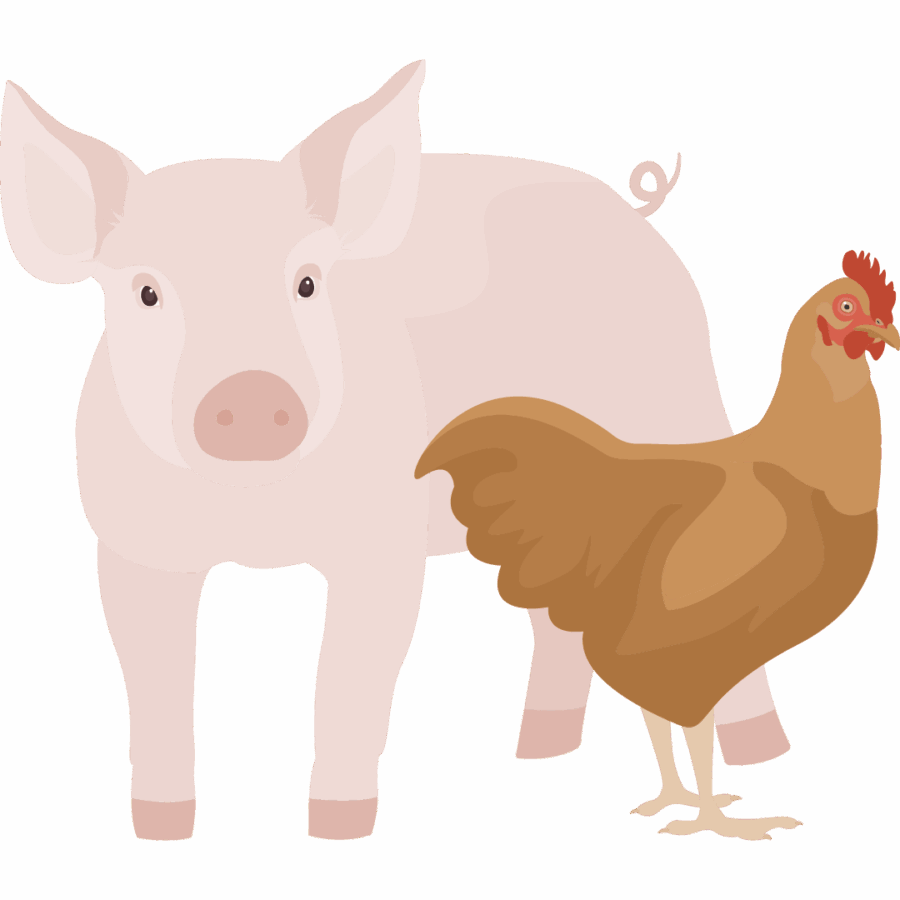
Developed and reviewed by RSPCA Australia’s science team, the RSPCA standards are informed by animal welfare science, RSPCA policy, leading farming practices in Australia and overseas, and take into account the commercial realities associated with farming. They are created with the aim of meeting the needs of animals while also being achievable.

As an evidence-based organisation, the RSPCA acts upon the science that says animals benefit from being able to express behaviours that they find rewarding. To have a good quality of life, animals need to have their nutritional, environmental, health and behavioural needs catered for as well as having a good mental state which is drawn from positive experiences.

The RSPCA standards are underpinned by the RSPCA Australia’s good animal welfare policy.
Note: The standards are developed in accordance with the Standards Development Document to achieve a balanced approach having regard, among other things to the RSPCA’s policies and the extent to which it is possible and practical to implement such policies in a commercial setting
Continuous improvements
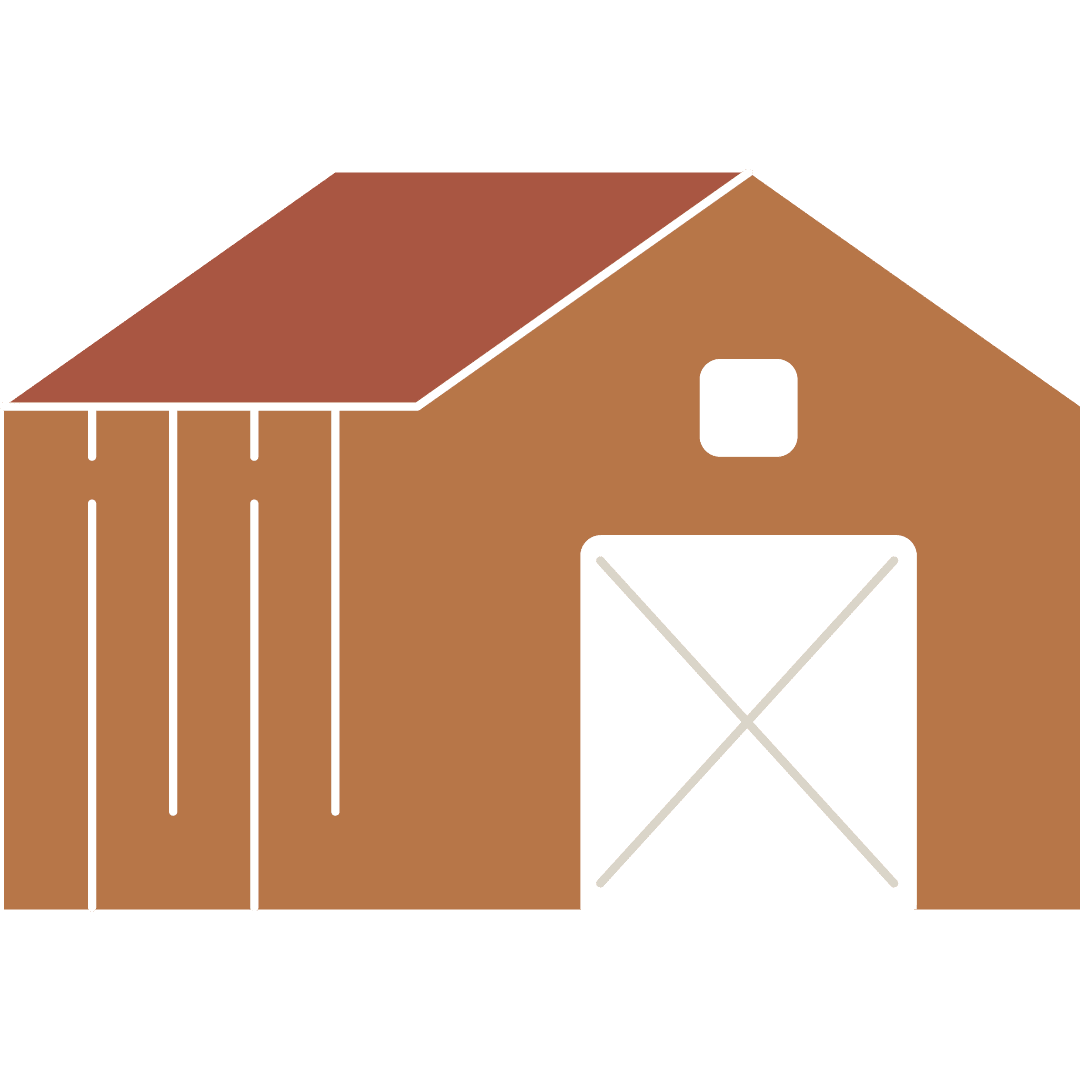
While the RSPCA standards go above and beyond what’s legally required in Australia, our aim is to set participating farms on a path of continuous improvement in animal welfare while maintaining commercial viability.

To achieve this, the standards are formally reviewed every five years. For every formal standard review, the RSPCA commissions an independent review of relevant animal welfare science, and invite participants in the Scheme, industry bodies, and other animal welfare NGOs to provide input.

